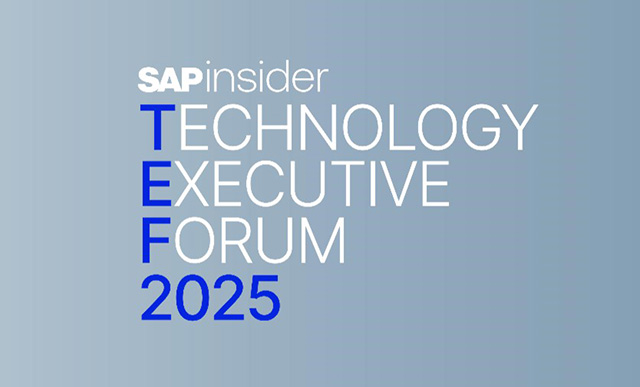Businesses need to innovate faster to survive and compete, but outdated ERP systems limit their ability to be innovative.
“Innovation is key. Only those who have the agility to change with the market and innovate quickly will survive,” observes Robert Kiyosaki, Entrepreneur, Business Leadership Consultant, and Author of
Rich Dad, Poor Dad.
How does innovation translate into today’s business landscape? It is the ability to move fast, in an agile fashion, enabling rapid response to change.
More and more, innovation is translated into the business landscape through digital workflows. Digital workflows have become the workhorses of the modern enterprise and gateways for introducing innovation. They enable businesses to execute in new ways within new business models and do so with unprecedented speed and agility.
Lagging with Legacy ERP
Organizations cannot achieve speed and agility with legacy ERP systems, for a couple of reasons.
First, legacy ERP infrastructure lacks the modern and agile capabilities and functionality needed to transform processes into modern digital workflows. Not only is the technology inadequate, but digital workflows built on most ERP systems require specially trained developers who are increasingly in short supply. Lack of resources and dependence on ERP system skills result in a backlog of ERP modernization projects that creates friction points to speed and agility.
Second, processes that need to operate end-to-end across the enterprise can become trapped within single systems of record. Data within legacy ERP systems can become siloed in a similar way — trapped in silos that don’t play well with one another, slowing down processes and handcuffing employees.
On the other hand, digital-native competitors, unencumbered by legacy infrastructure, can quickly launch new products and services. So, how can you update your SAP ERP system to deliver the same speed and ability as a digital native?
Organizations can “rip and replace” their legacy SAP ERP systems, but this can be expensive and time-consuming and incur risk.
Another approach is to work within the existing SAP ERP system by implementing technology, such as low-code application development, to create a connected system of action that can operate across siloes systems. This technology can quickly introduce innovation at all levels of the organization. Low-code applications can be built without specially trained resources so that innovation can be delivered on the ground by people who understand the requirements of the business. This technology builds value into legacy investments.
Low-code Speeds Development, Boosts Agility for SAP ERP
The right low-code platform can create a new layer of form and function for SAP ERP systems to operate with more agility. Low-code application development tools help democratize workflow development among other roles in the organization, such as business process analysts, to create applications and automate processes quickly.
Low-code platforms provide several benefits:
- New ERP business functions delivered in days or weeks by using low-code templates, code libraries, and prebuilt integrations to reduce friction.
- Faster innovation on ERP systems without specialized development skills by empowering citizen developers as a new resource to leverage.
- Avoiding force-fitting processes into an ERP core that are better optimized elsewhere by building “hard to fit” processes on a more flexible low-code platform that won’t disrupt the core and slow things down.
- Reduced backlogs through improved collaboration between traditional developers and citizen developers, and increased capacity by tapping line-of-business (LOB) developers.
- Agile responsiveness to changing market opportunities by using a platform that can deliver innovation with no limits.
Citizen developers have “deep domain expertise, which is something that professional software developers often lack. As a result, citizen developers can build solutions that quickly propel the business forward in meaningful ways,” explains Manisha Arora, Director of the Chief Information Office at workflow and process automation software provider ServiceNow,
in a Forbes article. Arora recommends that organizations “nurture” citizen developers and ensure they are not confined to one-off projects. She also supports formalizing a low-code training program.
“In fact, from a business perspective, encouraging citizen development is the only way to keep pace with the growing demand for applications,” she concludes.
SAP customers often manage and track business processes that involve many applications. Low-code app development tools can help organizations create those applications quickly and efficiently by empowering their citizen developers. Citizen developers can provide a tidal wave of resources, which can drive innovation at exponential levels of speed and scale.
Cut Development Time, Deliver Innovation Faster
ServiceNow
explains that its Creator Workflows solution supplies low-code tooling empowering citizen developers to take an idea to an implemented app in a day. Creator Workflows enables LOB professionals to quickly build compelling apps that can scale from a single department to the entire organization. Instead of relying entirely on developers with specialized ERP skill sets, enterprises can expand and accelerate app delivery by empowering business stakeholders like business process analysts. ServiceNow
estimates that low-code platforms can deliver innovation 90% faster.
Creator Workflows employ quick-start templates and a drag-and-drop development environment of modular building blocks and pre-built components to enable citizen developers to move projects faster in a shared environment, according to ServiceNow.
The solution leverages built-in automation, integration, analytics, and artificial intelligence (AI) to optimize ERP processes. Users can get a single full context view of all analytics and AI-assisted recommendations to resolve issues quickly, the company relates.
By managing the application development pipeline from idea to development, deployment, and optimization, Creator Workflows’ users can rapidly scale apps across their organization.
The solution connects any ERP and non-ERP systems, apps, and data while providing visibility into end-to-end processes. It enables LOB professionals to build apps while safeguarding application quality with automated testing and delegated development access, says ServiceNow.
“Delivering speed and agility at scale has never been more important, but getting there doesn’t happen overnight. By doubling down on automating workflows, driving innovation with citizen developers, and scaling delivery with centers of excellence, organizations can take the fast path to speed and agility at scale,”
concludes Josh Kahn, Senior Vice President of Creator Workflows Business Unit at ServiceNow.
What Does This Mean for SAPinsiders?
- Use low-code development. Low-code development taps into the expertise of SAP business process analysts and citizen developers by giving them tools they can architect and build their own ERP workflows. By using low-code platforms to enable citizen developers, organizations can slash app development time and boost speed and agility. And low-code allows SAP platform owners to cut technical debt by having new functionality built outside of the SAP core, creating a more manageable migration of their ERP platform to the cloud and SAP S/4HANA — tapping into more agile innovations to meet high volumes of change consistently.
- Integrate workflows to accelerate ERP processes. As business processes increasingly need to navigate SAP and non-SAP resources (systems/apps/data/etc.) within end-to-end workflows across the enterprise, SAP developers can use simple integrations to make those connections possible and accelerate delivery of those workflows.
- Promote collaboration between your citizen and professional developers. Citizen developers represent an untapped resource that many organizations are leveraging to handle increasing volumes of post-implementation ERP changes. This collaboration offers a huge benefit to increase the productivity and collaboration of SAP developers to speed up their ability to support process changes in the business.







